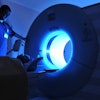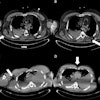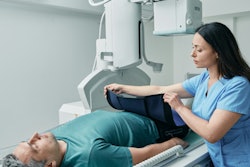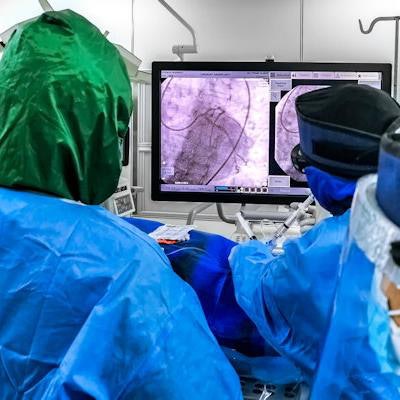
Women working in healthcare who are regularly exposed to radiation from x-rays and other image-guided procedures need better radiation protection to help minimize their risk of developing breast cancer, according to an editorial posted on 12 April in the BMJ.
Current radiation personal protective equipment (PPE) provides inadequate protection to breast tissue because it leaves exposed the area close to the armpit -- the upper outer quadrant and axilla, the most common site of breast cancer -- noted Isobel Pilkington, a core surgical trainee at Queen Alexandra Hospital, Portsmouth Hospital NHS Trust, U.K., and colleagues.
"Providing adequate breast covering PPE could therefore reduce radiation exposure and potentially help prevent breast cancer in female healthcare workers," they noted.
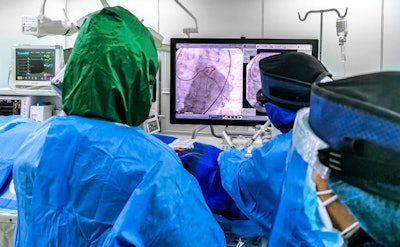 Standard PPE provides inadequate protection during image-guided procedures, according to a new editorial.
Standard PPE provides inadequate protection during image-guided procedures, according to a new editorial.The authors, who include radiographer Emily James from King's College Hospital NHS Foundation Trust in London, acknowledge that measuring the risk of occupational radiation-induced breast cancer in women working in healthcare is difficult.
"Data acquisition is complicated by the interval between exposure and development of disease, and the relatively small number of women working in image-guided specialties," they stated, adding that at the consultant/senior practitioner level, women make up 7%, 12%, and 16% of the U.K. trauma and orthopedic, interventional radiology, and cardiology workforces, respectively.
"As the number of female trainees entering these specialties increases, it is essential that the risks are further investigated, available evidence is considered, and equipment provision improved to minimize this risk," they wrote.
The evidence
Observational evidence from the U.S. suggests an increase in breast cancer risk among female orthopedic surgeons compared with an age-matched female population, according to the researchers. Also, a small Finnish study shows breast cancer at 1.7 times the expected rate in radiologists, surgeons, and cardiologists compared with female physicians not working with radiation.
In a study using artificial female torsos to measure radiation exposure, researchers found inadequate upper outer quadrant protection and no statistically significant reduction in dose when standard PPE was compared with a torso without PPE, they continued.
Occupational radiation exposure has not been identified as a risk factor for male breast cancer, but the 2017 Ionising Radiation Regulations state that the radiation dose delivered to all workers should be As Low As Reasonably Achievable (ALARA). The most effective way to achieve this is by reducing the duration of exposure, increasing the distance from the source, and shielding all workers with effective PPE, Pilkington and colleagues explained.
Axillary coverage
Additional protection, such as capped sleeves and axillary wings, can be worn under standard gowns to protect the upper outer quadrant of the breast.
"The addition of axillary coverage or sleeves has been found to decrease intraoperative irradiation to the upper outer quadrant by 99%," they noted. "Each new design to the market should be tested rigorously before claiming that it protects the upper outer quadrant."
The European Society for Vascular Surgery's 2023 Clinical Practice Guidelines on Radiation Safety have recommended female workers consider adopting this extra protection.
"Providing appropriate protection is a legal requirement of an employer, who has a duty of care to all workers exposed to radiation," the authors wrote. "The female breast appears to be particularly vulnerable and it is therefore important employers invest in protective equipment that enhances the safety of all their staff."
Looking to the future
The authors are currently working on several lines of further research, and are examining the current provision of radiation protective equipment in several hospitals across the U.K. to assess suitability, Pilkington told AuntMinnieEurope.com. They are also hoping to conduct further research into potential solutions to reduce radiation dose to the upper outer quadrant of the breast.
"We are working with industry to improve the designs and range of radiation protection options commercially available that cover breast tissue," she said. "We hope to scientifically examine the efficacy of several prototypes and provide guidance for all female health workers."
The team hopes to be able to work closely with the radiation protection community in undertaking this research.
The BMJ editorial is supported by the British Orthopaedic Association. In February 2023, the Bone and Joint announced that Pilkington's work had won her the journal's Core Trainee Prize (see feature article, "Surgeon, protect thyself: Enhanced radiation protection to reduce breast cancer in female orthopaedic surgeons").

